Maybe this is your first fall making school lunches for your kiddo. Maybe you’re looking to revamp the routine. Or maybe you’re realizing that the beloved PB&J’s of your childhood won’t work for your own child’s peanut allergy, or your school’s ban on peanuts.
Whatever the cause, you find yourself in need of some back-to-school-lunch inspiration.
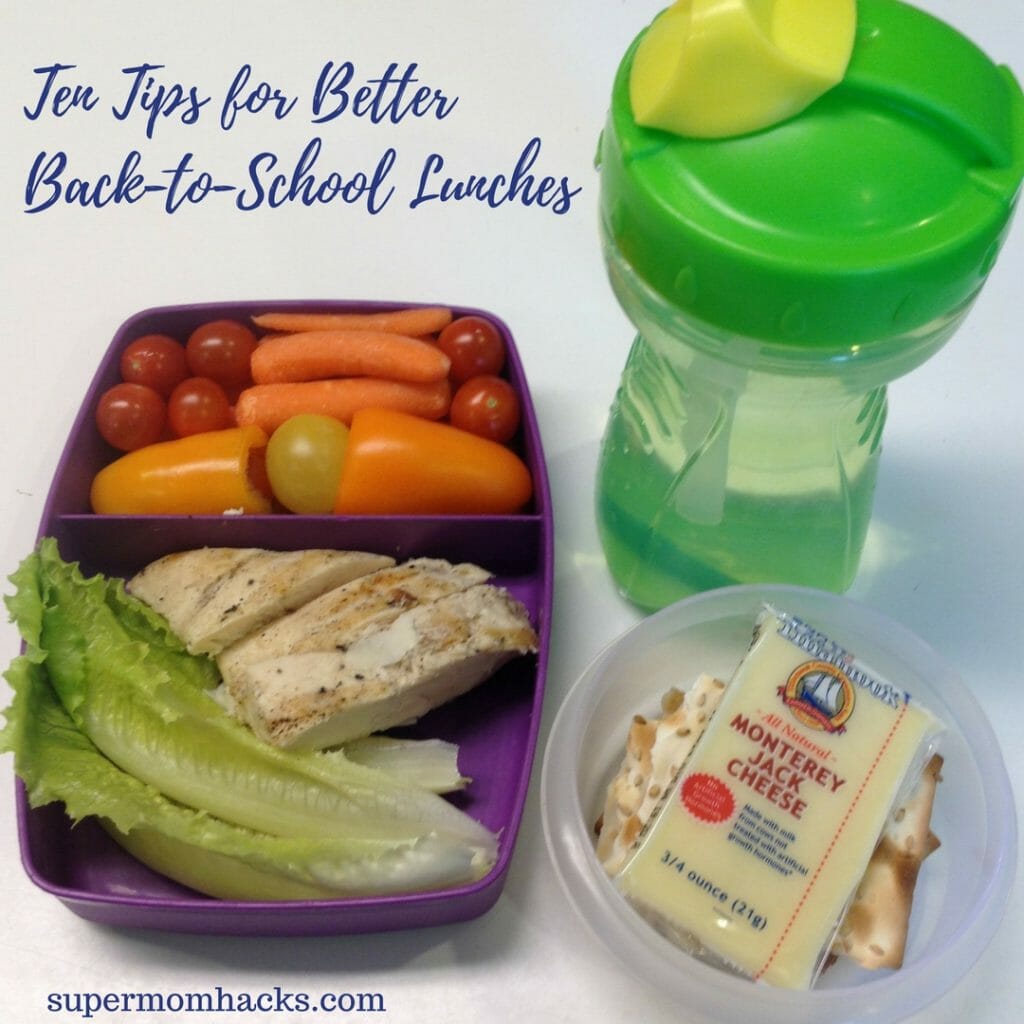
When my friend Keisha’s eldest son started preschool a few years ago, she emailed me for my $0.02 worth on packing school lunches for him. So far, I’ve only had to pack lunches one or two days a week. But when I have, there are certain principles that have guided my planning, and certain tricks I’ve found useful in the process.
So if you’re a newbie at packing school lunches – or looking for some new ideas – here are my top ten hacks for making the process easier for you, while keeping it tasty AND healthy for your kiddos:
1. Start with MyPlate
When I was growing up, the Four Food Groups (fruits and veggies, proteins, dairy, and grains) were burned into my brain by my Junior Girl Scout leaders. For every troop camping trip, we had to plan balanced meals and get them signed off in advance by the leaders.
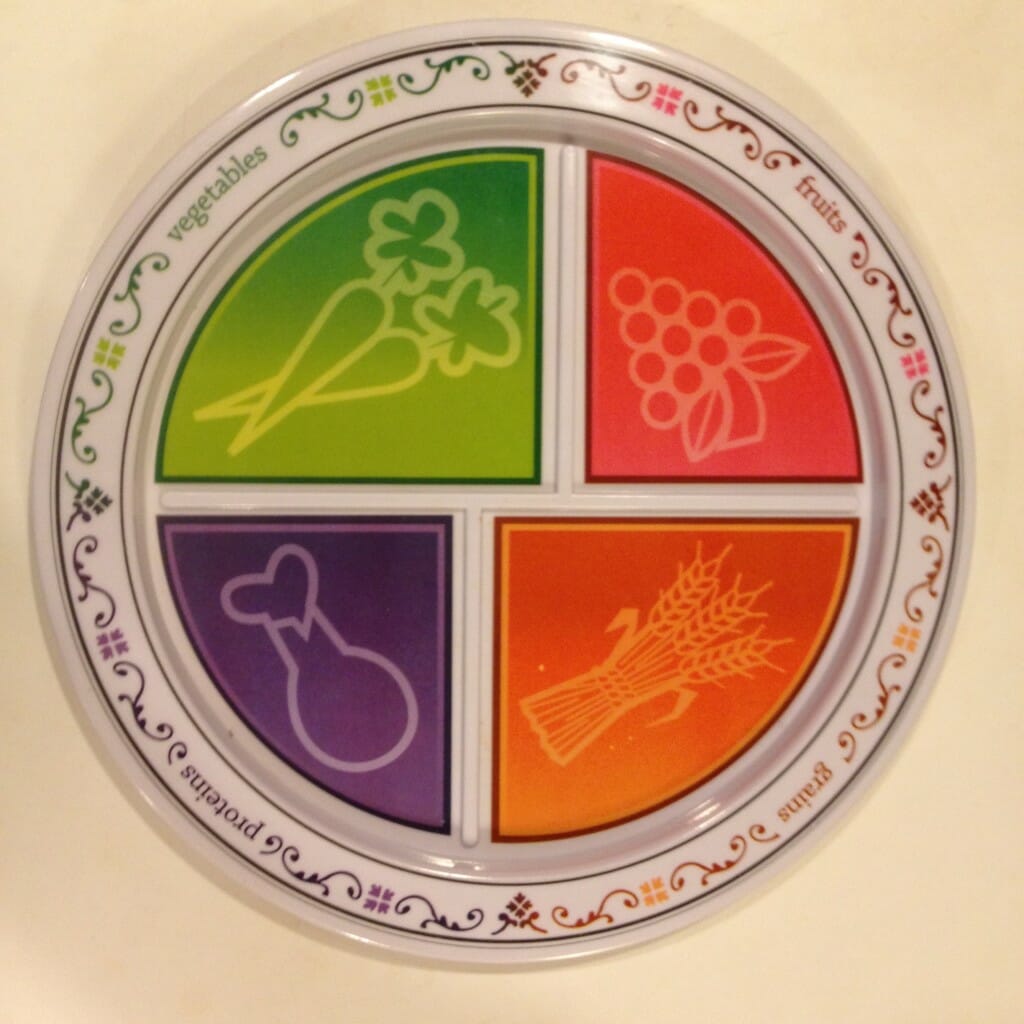
You can find today’s version of the Four Food Groups, as formulated by the U.S. Department of Agriculture, at choosemyplate.gov. The basic tenets of what I learned in Girl Scouts still apply, though: A balanced meal includes fiber and carbohydrates (found in different forms in fruits and vegetables as well as whole grains), plus lean protein. And calcium (found in dairy, which also contains protein) is critical in growing children for building bone mass.
2. Think finger foods
So how do you get all those things into your child’s lunchbox? Finger foods are a good place to start. For fruits and veggies, my lunchbox go-to’s include things like grape tomatoes, baby carrots, raw green beans, and spears of romaine lettuce from the inner part of the head, as well as fresh-cut apple slices, strawberries, and blueberries.
The same goes for other parts of the meal. A slice of ham spread with cream cheese and rolled around a spear of romaine (or a strip of red pepper) covers multiple groups, while being fun. Baby carrots plus a small container of hummus (for dipping) is another favorite in our house.
3. Think local and seasonal
At the same time, though, I’m not going to buy cucumbers (one of those things that I firmly believe tastes best when fresh-off-the-vine) in the middle of winter. The same goes for putting fresh berries into lunch boxes at a time of year when they have to be imported from halfway around the world.
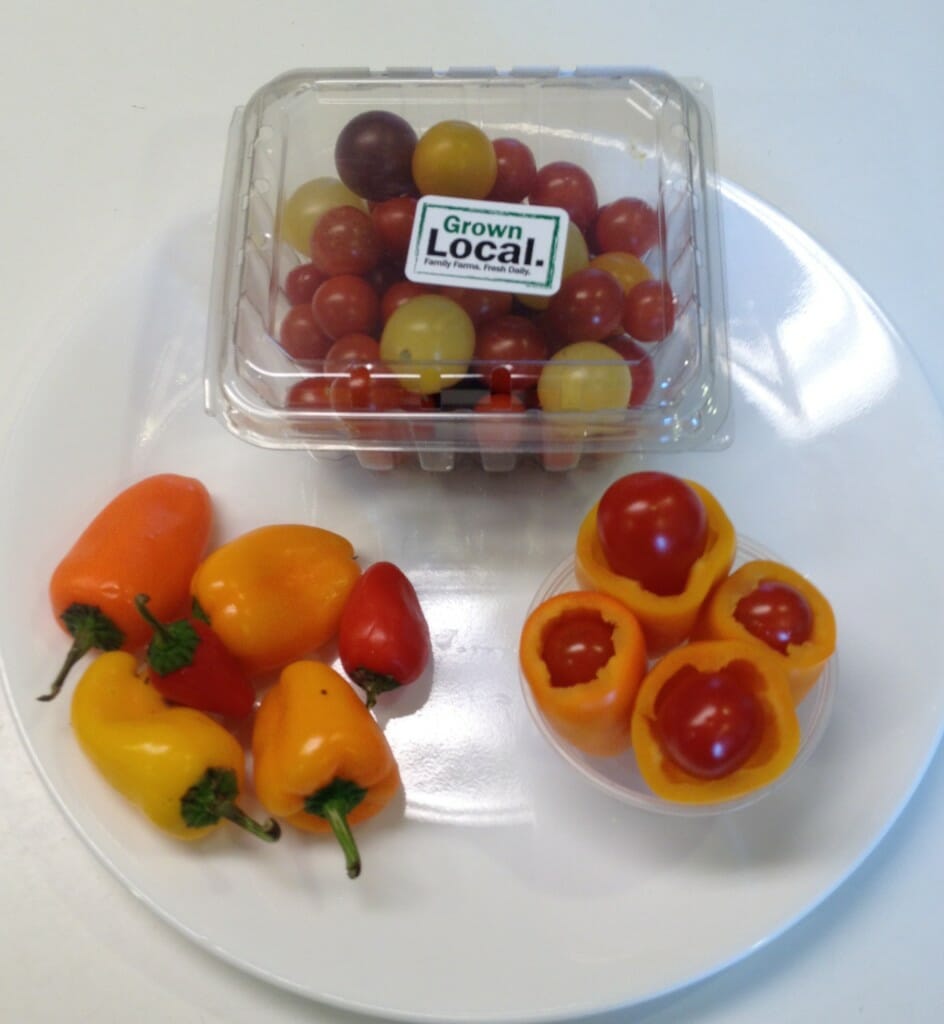
When trying to figure out what goes into my girls’ lunches, what’s in season is always a good starting point for the fresh produce; not only does it taste better, but it’s cheaper. So you won’t find me giving them apple slices in the spring, or fresh blueberries in the dead of winter. But in September, when our backyard’s fall crop of raspberries is coming in and our local orchards have fresh apples for cheap, these are no-brainers. Ditto for raw green beans and red pepper strips in early fall, when we’re still getting loads of them in our weekly CSA share.
4. Shop your store’s circular (and clearance pile) for sales
During the winter months when our CSA is on winter hiatus, I look for such kid-friendly treats as grape tomatoes, baby sweet peppers, and baby carrots on sale, then stock up.
The same goes for lunch-friendly precut cheese cubes and cold cuts, which our local store regularly features on clearance for a fraction of the deli-counter price – not because the food is about to expire, but because they’ve reached the end of a cheese block or deli loaf. (However, be mindful of loading that lunchbox too full of cold cuts and cheese, which are also high in sodium; more on that below.)
I also score pita pockets, cheese sticks, yogurt tubes, hummus, and baby carrots on clearance pretty regularly during the school year.
It may be super-tempting to stock up on things like those prepackaged “lunches” (containing crackers and cheese and salami – but where are the veggies?), lunch-sized bags of chips, etc. Beware, though, that the price you pay for this “convenience” is twofold: One, the cost is often a lot higher than getting the ingredients individually (not to mention, again, that you’re missing about half of MyPlate’s recommended food groups).
Two, check out the nutrition labels on these foods: Do you seriously want to set your kiddo up for a lifetime of health problems, by routinely feeding her a lunch that contains as much as 50% or more of an ADULT’s Recommended Daily Allowance of sodium?
Even baby carrots represent a “convenience” food whose price is jacked up accordingly; this is why I save myself the time of peeling and cutting large carrots by getting the baby ones only when they’re on sale.
5. Recycle whenever possible
This one assumes that someone in your household cooks balanced dinners (see Tip #1, above) on a semi-regular basis. Many of my favorite recipes, like homemade fried rice, are high on my personal list of lunch-friendly leftovers not only because of their balanced nutrition, but also because they still taste good when eaten cold.
Always getting the previous night’s supper might get old for your kiddo really fast, but keep this in mind as an option – especially if said supper was a favorite of your child, covers the bases as far as nutrition goes, and is palatable without reheating (at least, from your child’s perspective).
6. Try prepping the night before
Whenever my dear husband cooks dinner, part of his cleanup involves packaging up at least one or two containers of leftovers for himself for lunches at work. If you’re already cleaning up from dinner anyway, why not put aside some leftovers for your child’s lunch at the same time? Or if you’ll be making lunch from scratch, why not work on it while you’re making supper?
Even though I consider myself a morning person, I always find that it takes less energy and thought to put together a school lunch the night before, when I’m already working on food, than it does to add one more “to-do” to my morning’s list.
7. Find some bento containers
Over the past few years, the Japanese concept of “bento”-style lunches has taken the United States by storm, much to the surprise of my friend Kasuko. I met her at church when her husband, an American missionary to Japan, was back in the States for a year of fundraising and other public-relations work related to his missionary career. She confirmed what I’d read in parenting magazines: that bento-style lunches are indeed a Japanese art form of parental love, often consuming hours of prep time in the Japanese version of parental one-up(wo)manship.
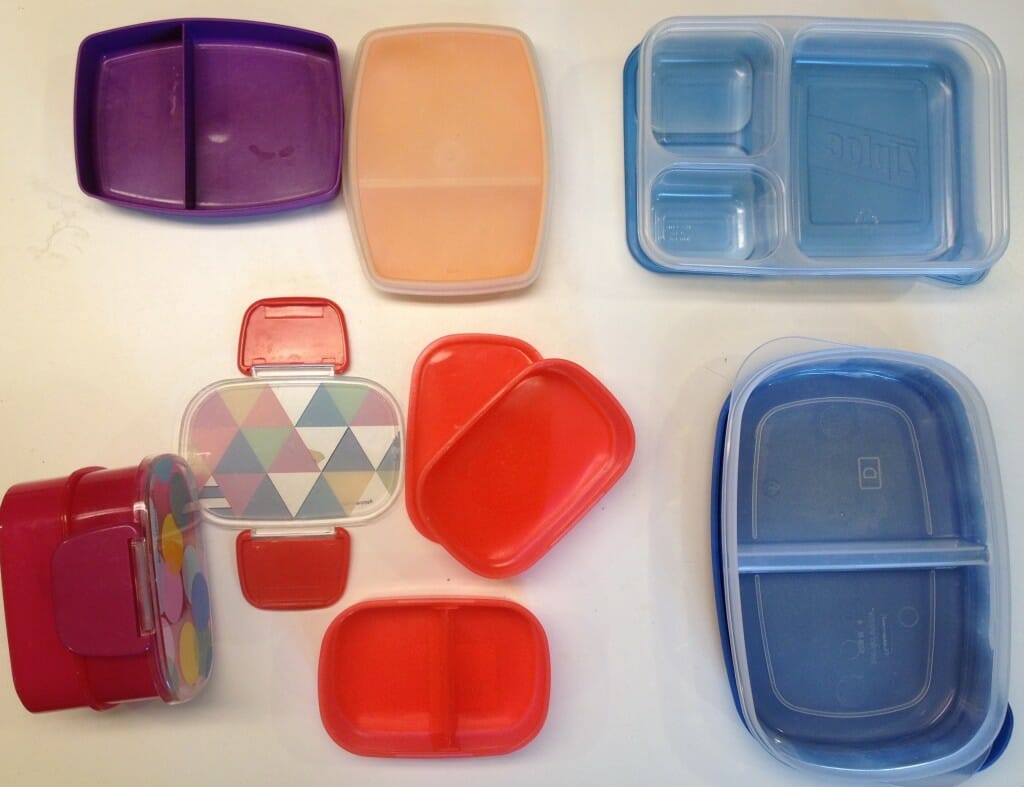
That’s not what I’m talking here. While it’s easy to take the bento concept to this extreme if you really want to, all I mean is this: Consider getting some ✅lunch containers with built-in compartments, to make packing up all this food easier (and with less waste). Except for some “tiffin boxes” I got a few falls ago at Target on sale, all my kids’ lunch-box materials so far have come from yard sales and thrift stores, including our very nice (but alas, discontinued) Tupperware snack boxes – which are perfectly sized for a preschooler’s balanced meal.
And yes, if you find one container you totally fall in love with that covers your child’s every need, then by all means, get it. But I have a whole basket of containers in the cupboard; which one I use on a given day depends on what’s for lunch.
8. Think bento balance
Part of the bento philosophy, from what I understand, includes an aesthetic balance of colors. This makes common sense. Besides nutritional balance (see #1, above), visual appeal will make your kiddo happier about his or her lunch. As long as you’re conscious of this, it’s not hard to take an extra two seconds to prepare a lunch that’s not only nutritionally balanced, but also visually appealing.
And if it’s visually appealing, your kiddo is drastically more likely to polish off the healthy fare you have to offer, instead of trading her lunch away with friends for their junk food.
9. Use the freezer to your advantage
Just as you don’t want to send your child to school with a mayonnaise-filled tuna sandwich on a super-hot day, it’s worth thinking about how you’re going to keep that lunch cold until your child eats it.
Or, even better, how you might use cold to your advantage.
One of Kimmie’s favorite protein-grain combos for school lunches is spaghetti and meatballs. Although my children don’t eat a lot of processed food, frozen meatballs are one exception. Every so often, our grocery store has two-for-one specials on a certain brand of precooked miniature frozen meatballs – the perfect size for a preschooler to eat in one or two bites, with nutrition stats that are better than average. And Kimmie thinks these meatballs are just as tasty when they’re cold as when they’re heated.
So in the morning, I add a serving’s worth of frozen meatballs to a pile of plain pasta in one section of her bento box, with her veggies in the other compartment. By lunchtime, the meatballs are thawed and ready to go. Yogurt tubes and applesauce pouches also freeze well, and will keep the rest of your kid’s lunch box cold while they thaw.
10. Add some love
It doesn’t have to be elaborate. But one of my fondest school memories from my childhood is of the short, sweet notes my mom popped into my lunch box on a semi-regular basis. A Post-it note saying “I love you” will mean far more to your kid in the long run than a fancy picture-perfect meal that’s several-notches-higher-on-the-parental-competition-scale than what you have time, energy, and money for.
I hope these tips helps recharge your batteries on school lunches this fall. What about you? What’s your favorite tip for making healthy lunches that are as wallet-friendly as they are kid-appealing?
If you enjoyed this post on better back-to-school lunches, why not share it with others by pinning this image?
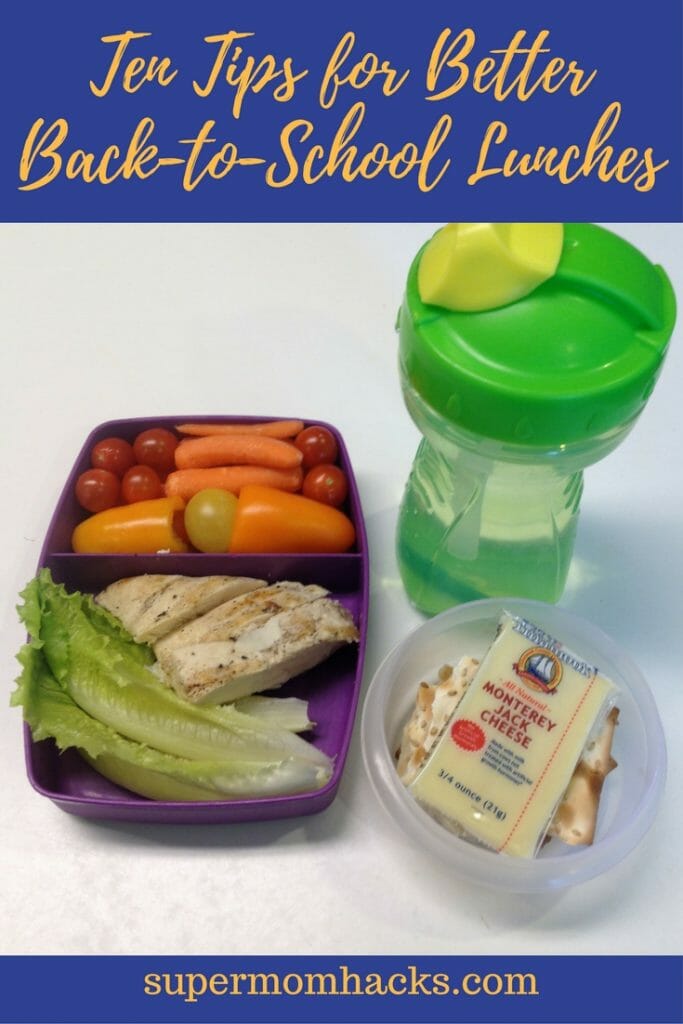
NOTE: This site contains affiliate links. I may earn a small commission from any purchases made through affiliate links, at no additional cost to you. For more information, please read the full disclosure/privacy policy.
Follow Super Mom Hacks on Facebook, Instagram, Pinterest, and Twitter!
Or stay in the loop by joining our mailing list!

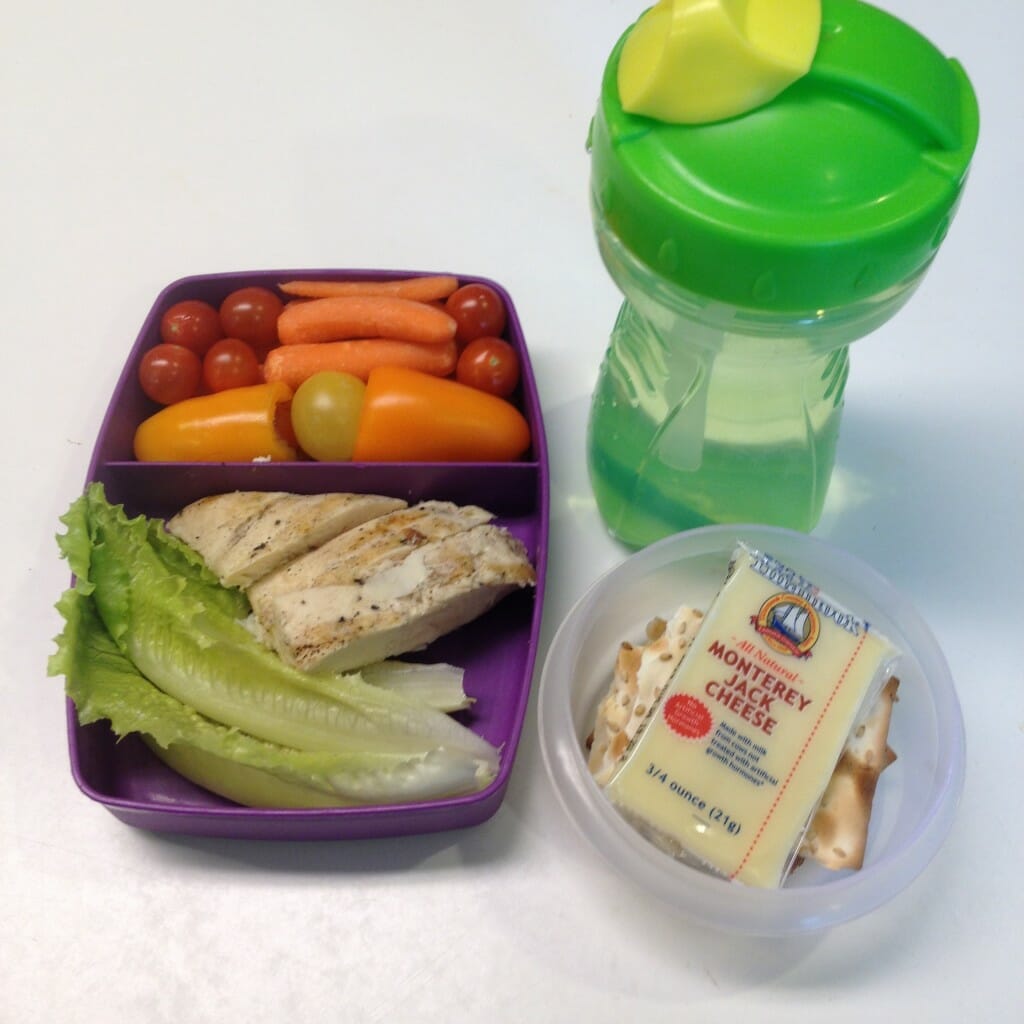
Ooooo so many helpful lunch hacks! My daughter loves finger foods, so I’m all about packing her those!!!
They do make things super-easy, both for her and for you!
This is so helpful! We are in such a rut with lunches after camp all summer!
It totally happens! Glad this can help jump-start your routine for the fall :)3
This is a great recipe! Would love to have this on my plate this weekend.
Glad you enjoyed the post…
These are amazing tips!!! I don’t have any kids but the tips make so much sense to me. Sharing your post.
The 4 food groups.. as an adult, I became more aware of this. When I was younger, we ate whatever was cooked. Lol! I love how you segmented the fruit and veggies into your daily routine. This is certainly my way of life now.
It is SO much easier to start these healthy eating habits young!
Aww, thanks for sharing! 🙂
I love that you added to recycle whenever possible. This is so important for people to remember.
Absolutely! (My favorite “R”!)
I love that plate! My little one is still a year away from starting school but I think I can use some of these ideas to establish healthy eating habits.
It’s never too early to start! 🙂
My daughter is still little, but due to some ever changing life circumstances, she will need to stay at daycare during lunch two days a week for almost a month. I am freaking out about figuring out what to pack for lunch. These tips are great.
Oh, I remember those days! It used to seem near impossible to pack one kiddo’s preschool lunch for two extended-day sessions per week, first time I had to do that. But it really DOES get easier/more routine – and these hacks will help get you to that comfort point faster. (As always. you get to benefit from things I had to figure out the hard way!)
I found those tips super useful, not only for kids but for adults too! I love packing healthy lunches for my work and these a great tips
So glad you even found them helpful! 🙂
These are great tips! I always pack my kids lunches and have been needing some advice for improvement, so thank you!
You are so welcome – glad they helped!
Awesome ideas! A good healthy meal prepared with love and a note is wonderful. My kids loved it when they had the notes in their lunch boxes. Great job!
Aww, thanks! 🙂
I’m a big fan of prepping packed lunches the night before. So much better than trying to do it during the morning chaos.
Yes! – it makes it a lot easier, for us, to just pack up leftovers into next day’s lunches 😉
My boys have both had the same bento-style lunch boxes for 3 years now and they are holding up great! It’s a perfect way to give them a variety because that’s what little kids tend to prefer. And I can have everything in them open so they don’t have to ask for help with their lunches. This year, though, my youngest son is going to a new preschool that provides lunch and my oldest will buy from school so I don’t have to pack a lunch!
Woohoo, then you are off the hook for a bit! Aren’t bento boxes just the best?
This is so useful! I have a niece and a nephew starting “big” school this year so I will definitely forward this to their first time pre-schooler parents.
Aww, thanks for sharing it with them! 🙂
Love this and it’s so detailed. It would fit right in with the guestpost on my blog for family meal planning. Only… I don’t actually subscribe to the my plate theory. It’s probably because we have had food issues and health issues that involve avoiding some of that in order to heal. Long long story there haha.
Yeah, it definitely gets more complicated when you add in food allergies and related issues – I have a good friend who’s vegetarian AND lactose-intolerant, so I have to get creative to cover all the nutritional groups/needs whenever I cook for her!
These are great ideas for a healthy lunch that isn’t filled with junk food. I have to of those divided plates they came with a cooler set the health department was giving away.
I LOVE our MyPlate plate! (As do the girls!)
These are such wonderful ideas. We stick to the sandwich (meat or peanut butter) and then my girls get their choice or fresh fruit, yogurt, cheese sticks and veggies, as well as a choice of chips or animal cracker-type item. They get to take a total of four items and we work hard on portion sizes. I do enjoy the idea of leftovers, though, and really love it when I am able to sneak a little note into their lunches!
Ooh, you’re more organized than I am! CHOICES! (And you’re so lucky that your school lets you send in PB – my kids love it, but it’s not allowed anywhere in our district, even the private preschools.)
Great tips. I like to freeze her juice box and let it keep the rest cool.
That’s a good one that I haven’t tried yet! My kids are mostly into “cold” foods (they LOVE frozen veggies and cooked pasta right out of the freezer!), so they love days when I skip the ice packs and pack up frozen meatballs/veggies/pasta that mostly thaws by lunchtime lol.
Such practical and helpful tips! And of course, the best one of all is the love note at the end! Those are priceless 🙂
Absolutely! 🙂
These are such wonderful ideas. I wrote a similar post about creative toddler bento box lunches, but they could be used for school-aged children as well. I am a huge fan of creative lunches and think it’s a labor of love for my kids! <3
Aww, thanks for the comment, Kellie! Isn’t it great when we figure out hacks for our toddlers that we can later adapt when they’re older? 🙂
#10! My mom did this too, especially around holidays! Thanks for sharing all these great tips!
Aww, isn’t that sweet? I’m getting warm fuzzies now just thinking about all those love notes! You’re more than welcome, Jackie – glad you liked them, and thanks for reading! 🙂
lovely tips! I always preparing everything night before:)
*Thanks* – doing prep the night before makes things SOOOOO much easier, doesn’t it? 🙂
What an awesome recipe and this is perfect for me to having a good recipe for our lunch especially I’m busy all day and hard to think a new recipe for lunch
Thanks, Angela. Hope these tips make your life easier as a busy mom! 🙂
Pingback: Over 30 Back to School Tips You'll Love!